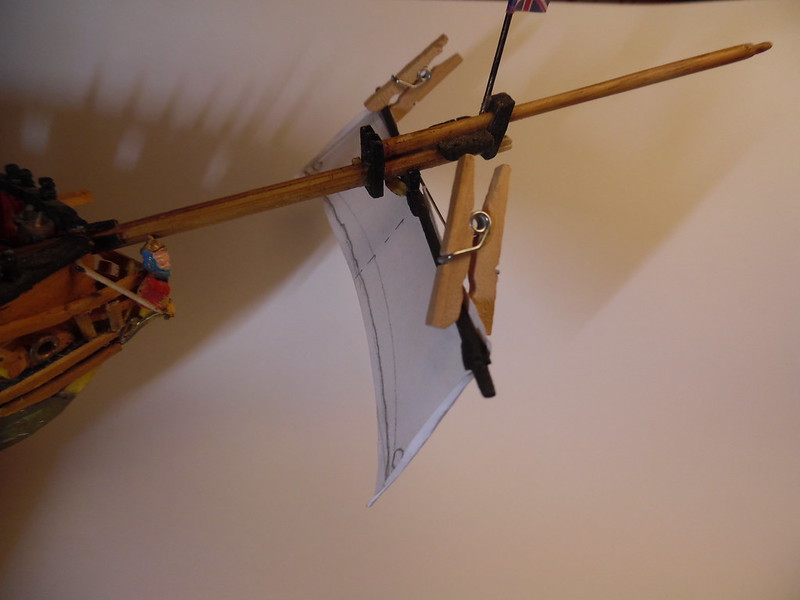![]() Yes, that is a bad habit I have when a project gets boring, I put it aside until the modeling sprit catches hold. I promise to finish to the bitter end.
Yes, that is a bad habit I have when a project gets boring, I put it aside until the modeling sprit catches hold. I promise to finish to the bitter end.
Now, to continue, to make a spritsail to attach to the spirit sail yard. Since no sail arrangement were on the Hahn ship plan, I had to make a guess of what a sprit sail would look like on the bowsprit model. This was acomplished by for cutting out a paper spritsail and attaching it to the bowsprit.

Here, the paper sail is attached to the bowsprit to see if it looks correct.

From the spritsail template, a silkspan sail is cut out and ready to have reef points attached to this sail.

Here are the materials needed to make reefpoints. A upper template to make holes where the needle will be inserted with thread. A lower template that will serve as a guide for the reefpoints position and of course a needle and thread, in the case a light brown upholstery thread, which is stronger than regular sewing thread.

To make reefpoints, two templates are required. The top one is to locate on the sail where the reefpoints are to be located by placing the template on the sail and punching out holes on the sail surface. The second template is place below the punched out holes where a light brown thread will be stitched to simulate reefpoints.

With needle ready, the reefpoints will be attached.